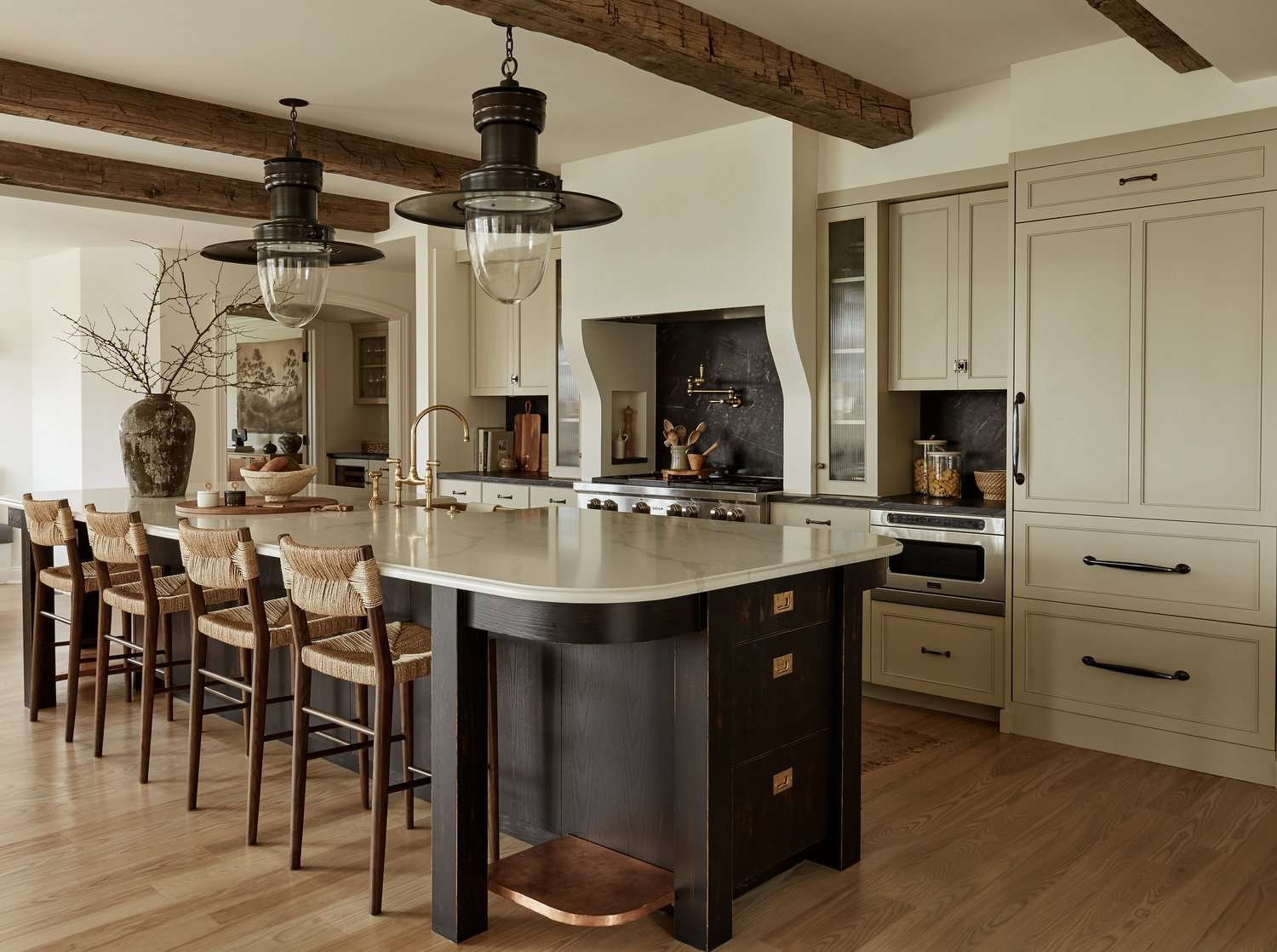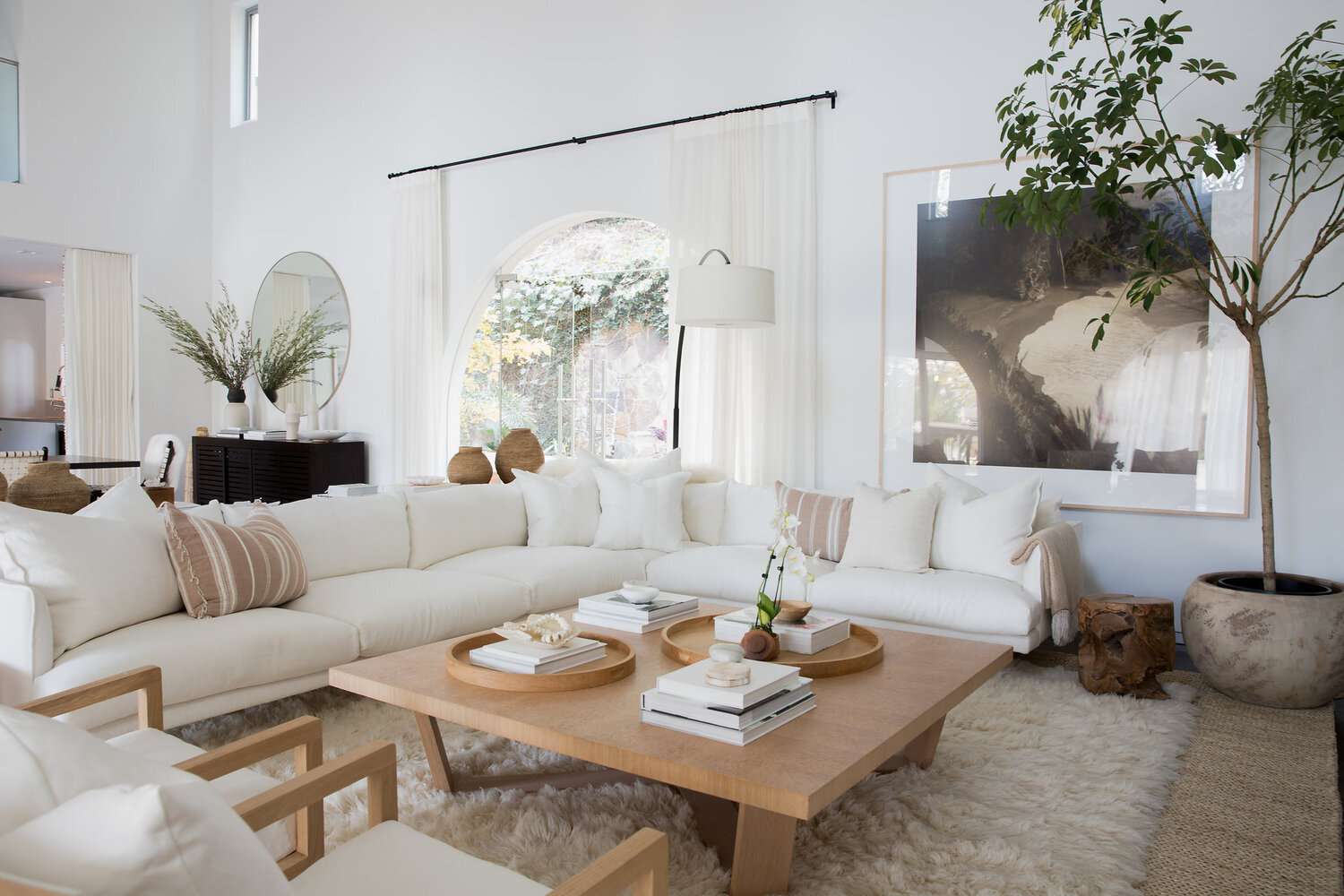Act as a native French speaker and an expert in Home Decoration, who speaks and writes fluently in French. Translate the article below into French. Make sure the translation is linguistically accurate, and conveying the meaning, facts and figures of the original text. Ensure the content is engaging and culturally appropriate for French readers. Don’t talk about Yourself or Your Experience. Don’t Self-reference. Don’t explain what you are doing. The article to translate:
There are so many wood types out there—from deep walnut to warm cherry, cool ash wood, and so much more. So, it can be hard to know where to start when it comes to mixing and matching wood colors in your furniture.
There are certain key factors to consider: Do you already have a lot of wood in the bones of your space, like the floors or cabinets? How do you choose a base color versus accents? Is it better to find a perfect match or create contrast with your wood furniture?
Ahead, we tapped a few interior designers for their tips on how to mix and match wood furniture colors—in a way that works for any style and space.
Meet the Expert
- Han Dang is the founder and principal designer of Very Handsome Studio
- Eugenia Triandos is the president and principal designer of Hibou Design & Co
- Iman Stewart is the design director of IS Interiors

The Benefits of Mixing Wood Tones
While mixing wood furniture colors may seem like something to avoid, it can infuse a welcome dose of visual interest.
“Mixing different wood tones in furniture can add depth and richness to a space, creating a natural, layered look,” Han Dang, founder and principal designer of Very Handsome Studio, says. “When done thoughtfully, it brings texture and variety to the design.”
Weaving together different wood colors can also allow for more personalization in a space.
“It makes it feel less cookie-cutter and more curated,” Eugenia Triandos, president and principal designer of Hibou Design & Co, explains. “When all woods are the same, we feel more stuck with the palette and it starts to feel like you’re purchasing everything from the same store. We call this effect the ‘big box store five-piece set’ that we always try to avoid.”
Still, it’s important that mixing wood tones is done correctly. Otherwise, it can lead to a cluttered, discordant design.
“Finding the right harmony between multiple wood tones can be tricky, especially with a variety of pieces,” Dang says. “Unlike matching tones, successfully mixing them requires more intentionality and design expertise to maintain a cohesive and polished look.”
Want more design inspiration? Sign up for our free daily newsletter for the latest decor ideas, designer tips, and more!

How to Choose Wood Tones That Mix Well
When mixing wood tones, it’s important to consider the undertones—whether they’re warm, cool, or neutral.
“Warm woods, like cherry or oak, pair best with other warm tones, while cooler woods, such as ash or gray-stained oak, blend better with similar cool tones,” Dang says. “Keeping the undertones consistent helps create harmony, even if the wood shades contrast.”
Triandos also recommends staying within the same base hue or undertone, but varying the saturation from light to dark.
“When you stick to this rule, there really is no limit on how many different woods you bring into your space,” she elaborates.
You can also introduce black wood furniture to add a neutral touch and balance the overall palette, Dang notes. Certain hues can establish the mood of your space, as well.
“Darker colors tend to feel more formal, while lighter tones or bleached woods will always read more casual,” Triandos says. “If you’re unsure of which direction to take your home, a medium brown is always a safe bet. It will age gracefully as it is both timeless and doesn’t make your home feel too casual or too stuffy.”
According to Iman Stewart, design director of IS Interiors, combining different finishes and textures of woods can add further visual interest to a space.

Create Contrast
Ultimately, mixing woods has a lot to do with creating juxtaposition.
“We recommend mixing no more than two natural wood tones, and they should have a strong contrast,” Dang says. “For example, if you choose a light maple with warm undertones, pair it with a rich, dark walnut for a striking effect.”
You can start with a base wood tone to cover larger surfaces, like flooring, ceilings, or bigger furniture pieces. Then, add contrast with accent woods in smaller pieces like side tables, chairs, or decor, Dang says.
“If your base wood is light, go for darker accents like walnut or mahogany,” Dang suggests. “For darker bases, lighter accents like maple or ash can add brightness.”
Creating contrast is especially important when furniture pieces meet the floors.
“The idea is to make sure that there is enough contrast for it to appear different,” Triandos explains. “Sometimes when we try hard to get the perfect match, if it’s off by a bit, it will look like a miss. In this case, I would often rather select a shade two shades lighter or darker to create the necessary contrast.”

Balance Out Woods With Other Materials
When starting to mix woods, the material can overwhelm a space. So, to balance it out, it’s helpful to break it up with varying textures.
“Try incorporating other materials like metal light fixtures, stone countertops, or upholstered furniture to add contrast and soften the overall look,” Dang recommends.
Soft materials, like linen drapery or rugs, will tone down the wood and create a separation between rooms, Triandos says, and recommends incorporating other decorative accents like leather.
Lightness and brightness are some of Stewart’s favorite ways to break up woodsiness, as well.
“When there is a lot of wood in a space, it is good to balance with [neutral] colors like off-whites,” Stewart notes. “In addition, strategic lighting [can] highlight certain areas and create warmth, helping to balance the wood’s presence.”




